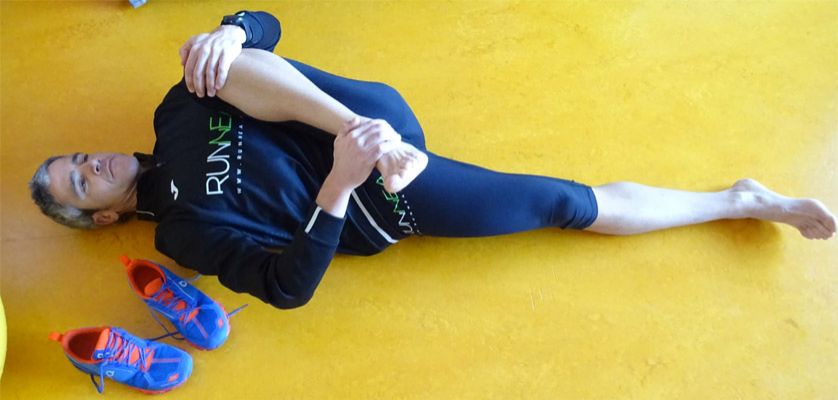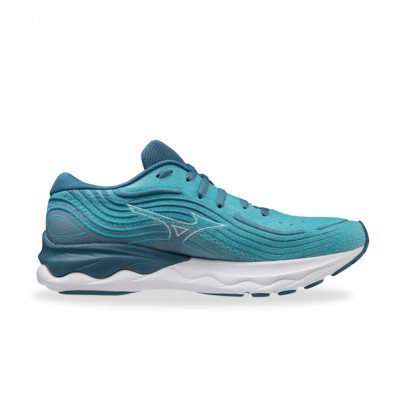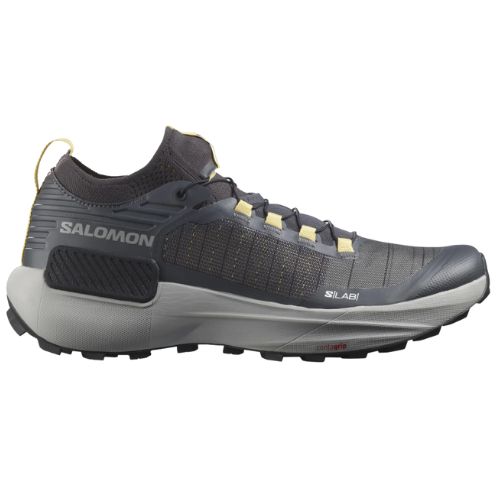Dear runner friend, and companion of fatigues on the asphalt, today we are back to talk about leg stretching exercises. And since we have to be confined at home, it is a good time to get into the habit of stretching for a while every day.
As you know in Runnea we try, as far as we can, to be an open space to be a guide and a help to the popular runner. At the same time we also aim to be a meeting point for all those athletes who share the same passion to put on their Running shoes and go out for a run.
Thus, in recent weeks we have given special importance to the chapter of stretching. And for this we have put ourselves in the hands of specialists in the field. The physical trainers of Runnea Academy, online training platform and thus avoid overloads and injuries.

Leg stretches Why you should not skip them?
We turn to the voice of the experience of one of our sports equipment analysts at Runnea Alberto Cebollada Kremer. Albertohas a degree in Physical Education and teaches at the Department of Education of the Government of Navarra.
"Flexibility is a basic physical ability that allows us the optimal functionality of the locomotor system, and depends on joint mobility and elasticity of the muscles," says Cebollada, who also makes it clear that "resistance and strength training favors muscle shortening, and this reduces the mobility of the joints, restricting movement. This ultimately leads to reduced mobility, muscle imbalances and muscle limitations.
With these remarks, Alberto Cebollada also stresses that "an elastic muscle is more efficient from a mechanical point of view and has a positive influence on mechanical efficiency, and also, with daily work on elasticity, post-exertion muscle relaxation is favored, preventing overloads and thus reducing the probability of injury to the different tissues".
- You may be interested in: Best back stretches for athletes.
When and how long is it advisable to stretch?
To try to answer these two questions, the current 46-year-old Spanish Quadathlon champion, puts as a basic premise that you have to know how to differentiate the needs of stretching before, during and after physical activity. "Of course, you shouldn't stretch the same before training as before a competition, nor the same before or after running," says Cebollada.
For example, as a general rule, before running, the best thing to do is to "mobilize and stretch as part of the warm-up, and dynamically, without stretching for too long". And the statement has its scientific basis in a study on the effects of dynamic stretching on running performance [Yamaguchi et al, 2015; J Strength Cond Res 29-Apr]. The results of this study have shown that prior dynamic stretching was able to improve aerobic endurance performance, so it is clear that the initial recommendation can only be that "you should not stretch too much before training or competing, and that it is better to warm up by mobilization and short dynamic stretches," says Cebollada.

Keys to perform them well and effectively
When it comes to getting down to work, and executing the relevant stretching table, our senior runner tells us that there are different methods and techniques for its implementation, and that perhaps the most popular is known as "stretching" for its easy application and its great profitability. "The action of this method is focused on maintaining the tension of the muscle for several seconds when stretching it," says Cebollada.
Thus, depending on whether stretching is carried out before exercise and in the warm-up phase, Alberto Cebollada's recommendation is none other than "stretching dynamically, reproducing the gestures of physical activity, but always seeking maximum joint amplitude and, above all, not to hold the muscle stretching for too long. This will ensure that we do not lose our muscle tone".
"It is enough to stretch for a few seconds and in different positions, which will activate different fibers of the same muscle, and in muscle chains, involving other muscles that collaborate in a synergistic way and not isolated in the realization of the sporting gesture," continues the experienced athlete from Tudela.
On the other hand, and speaking of the muscle groups that should be involved in the different stretching exercises, this trainer of sports technicians points out the need to "stretch the musculature involved in the dynamics of the joints of the lower extremities, i.e. hip, knee and ankles. But neither should we forget the muscles of the thorax, upper back, shoulders and arms," he stresses. Although for Alberto Cebollada, the real protagonists are "psoas iliacus, quadriceps, gluteus, tensor fascia lata, ischiotibioperoneus, triceps suralis and plantar flexors together with plantar fascia".

Stretches that must be performed
With all this, Alberto Cebollada Kremer highlights the stretches that must be performed without fail. They are mandatory, even if you are pressed for time.
Psoas iliacus

For being the powerful hip flexor that has to shorten and whose action causes the "tilt" of the hip or anteversion movement that causes pelvic instability and most of the lumbar problems in the runner. It also helps to stretch the anterior rectus quadriceps as this portion is also a hip flexor.
Triceps suralis

Calf muscles, but especially soleus. This muscle that inserts into the Achilles tendon has a special role in running because it is requested eccentrically in the phase of support of the foot on the ground, so it tends easily to accumulate tension, the famous "trigger points" or trigger points.
Hamstrings

Both with the knee stretched and flexed to stretch the three muscles that compose it in its entire length, but always with the necessary postural hygiene. This means keeping the back straight. It is very important to learn to stretch well, in the proper posture, so as not to risk the health of our spine.
Tensor of the fascia lata

Abductor or hip separator muscle that often "gives runners a hard time" because of its involvement in the dynamics of the knee as it tries to stabilize it in each stride. A good way to prevent fascia lata tendonitis is to remove tension daily and gain muscle-tendon elasticity.
Pyramidal and gluteal

Stretching the muscles that extend and rotate the femur, such as the gluteus muscles, and trying to go deeper to remove tension from the piriformis, a muscle located deep in the gluteal fossa, will alleviate hip discomfort and help prevent piriformis syndrome.
Another of the important recommendations that this Physical Education graduate transmits to us is that whatever stretching table you put into practice "it must be personalized, and must be adapted to the needs and characteristics of each athlete". In addition, Cebollada takes the opportunity to launch the recommendation of myofascial release massage, using the foam roller. "My experience tells me that I achieve a greater degree of relaxation after stretching and associating the massage with the foam roller and that I achieve a greater depth in the muscle fibers, and I can also relax very specific areas that may have accumulated tension".
The final conclusion that Alberto Cebollada has made us reach is that "we must stretch before exercise, but for less time, and better dynamically. And after running we can spend more time, stretching in a softer way, because the fatigued fibers respond worse to stretching, and therefore, the best way is static between 20 or 30 seconds".

Read more news about: Running Training


















